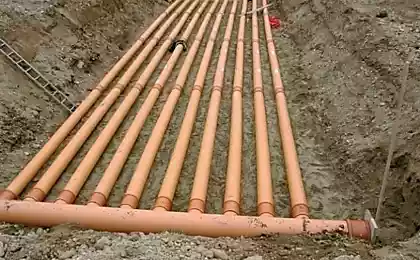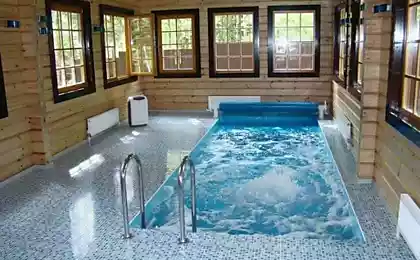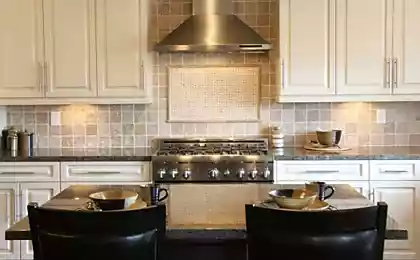623
Provide comfort and energy efficiency in the home with mechanical ventilation
The air that people breathe, has an impact on his health, mood and performance. Therefore, it is very important that the premises where people live and work, ventilated. Natural ventilation is dependent on weather conditions, may not always provide quality air in the buildings. Therefore, for controlled supply of fresh mass and output of waste is compulsory (mechanical) system.
The principle of operation of installations for forced airMechanical ventilation — ventilation, artificially organized. Fresh flow is supplied to the building, and the waste is excreted through the ducts, under the influence of thrust created by the mechanical driving force (fans). The advantages of this system over natural ventilation:

Classification of ventilation systems forced inducementBy way of arrangement of artificial ventilation system can be:
The system of ventilation of structures, organized by artificially, can be:
Air flow mechanical motivation, In this case, a fresh stream of delayed fan in the air intake device, and then the pipe system is distributed over different areas. If necessary, he may succumb to additional processing, such as filtering, heating/cooling, moisturizing. Used mass removed through cracks in window and door constructions, mines, natural ventilation.
System of forced air supply comprises:

Diagram of the supply Plenum
On the location of supply are:
Forced ventilation artificial inducement equip less than exhaust. This is due to the significant cost of the system, the need to allocate a larger area under the ducts and equipment. Much easier and cheaper to organize the supply of fresh air through the intake valves.
Hood forced typeThis system is designed to remove exhaust (superheated or contaminated) air from rooms by artificial means. Fresh masses is through leaks in Windows, walls, air-supply valves.
The system of removing the used air from the premises consists of:

Flow-through and recirculating hoods
The organization of the influx and output of air is mechanicallythe Most efficient, allowing you to control the volume of the supply and output air is ventilation forced motivation. It consists of roads for which a fresh stream is fed into the room and channels that remove waste mass. While all of these ducts operate simultaneously. This type of ventilation allows you to balance the fresh and exhaust streams, to avoid draughts in premises.
The main elements of the system:
Note: the recirculation mode cannot be used if exhaust air there are pathogens, viruses, resistant odors.
In the ventilation system with heat recuperator inlet enters the special thermal compartment, where they are heated to the required temperature due to the energy of the exhaust mass, deriving a parallel line. This method also avoids the heat loss in the house to save electricity.
When constructing this type of ventilation is important to correctly position the device for the intake and discharge of air. The first place on the windward side, a minimum distance of 8 m from the second.
Forced ventilation allows you to establish an effective air exchange in rooms where natural is unable to cope with stress. The choice of the optimal system of organization of air exchange in the house/apartment due to the size of the premises, their purpose, degree of contamination, as well as the financial capabilities of the owners. published
SUBSCRIBE to OUR youtube channel that allows you to watch online, download from YouTube free video about the recovery, the rejuvenation of man. Love for others and ourselves, as the feeling of high vibrations — an important factor for improvement . \
Put LIKES and share with your FRIENDS!
www.youtube.com/channel/UCXd71u0w04qcwk32c8kY2BA/videos
P. S. And remember, only by changing their consumption — together we change the world! ©
Source: 79w.ru/ventilyaciya/chastnyj-dom/obespechivaem-komfort-i-energosberezhenie-v-dome-pri-pomoshhi-mexanicheskoj-ventilyacii
The principle of operation of installations for forced airMechanical ventilation — ventilation, artificially organized. Fresh flow is supplied to the building, and the waste is excreted through the ducts, under the influence of thrust created by the mechanical driving force (fans). The advantages of this system over natural ventilation:
- functioning outside the influence of weather conditions;
- air is supplied and displayed in the required amount, which eliminates the shortage or stagnation;
- supply air masses coming to the premises cleaned, heated to a comfortable temperature, optimum humidity, in full compliance with sanitary norms;
- the exhaust air is pre-cleaned before release into the atmosphere.

Classification of ventilation systems forced inducementBy way of arrangement of artificial ventilation system can be:
- channel is represented by a network of roads, designed to supply, transport and exhaust of air masses;
- ductless — fresh flow is directed into the room through ventprom, or building envelope, the exhaust is discharged through exhaust openings are equipped with a fan.
The system of ventilation of structures, organized by artificially, can be:
- supply;
- exhaust;
- supply and exhaust.
Air flow mechanical motivation, In this case, a fresh stream of delayed fan in the air intake device, and then the pipe system is distributed over different areas. If necessary, he may succumb to additional processing, such as filtering, heating/cooling, moisturizing. Used mass removed through cracks in window and door constructions, mines, natural ventilation.
System of forced air supply comprises:
- air terminals — the devices designed to intake fresh air from outside. They are installed outside of buildings, in places where no exhaust gas of harmful impurities;
- the heating device (heater);
- cooler;
- filter installation, cleaning the air from solid particles, impurities;
- distribution manifolds. Most often, they are provided with metal pipes, rarely of brick or concrete channels.

Diagram of the supply Plenum
On the location of supply are:
- household — used for air supply in private houses, apartments;
- industrial — power device, which are used in the factories.
- one — piece- when all the devices are assembled in a single housing;
- patterned — when the installation is composed of individual units.
Forced ventilation artificial inducement equip less than exhaust. This is due to the significant cost of the system, the need to allocate a larger area under the ducts and equipment. Much easier and cheaper to organize the supply of fresh air through the intake valves.
Hood forced typeThis system is designed to remove exhaust (superheated or contaminated) air from rooms by artificial means. Fresh masses is through leaks in Windows, walls, air-supply valves.
The system of removing the used air from the premises consists of:
- exhaust openings with ventilatie;
- the fan installed in the channel;
- ducts;
- cleaning devices (in the case that the content of harmful substances in the emitted flux exceeds the permissible limits).
- local — the local presented devices for exhaust or contaminated air (for example, a cooker hood in the kitchen, in the Smoking room);
- General and regulating the ventilation of homes.

Flow-through and recirculating hoods
The organization of the influx and output of air is mechanicallythe Most efficient, allowing you to control the volume of the supply and output air is ventilation forced motivation. It consists of roads for which a fresh stream is fed into the room and channels that remove waste mass. While all of these ducts operate simultaneously. This type of ventilation allows you to balance the fresh and exhaust streams, to avoid draughts in premises.
The main elements of the system:
- air intake device;
- fans (supply and exhaust);
- devices for heating/cooling;
- filters;
- drying/moisturizing unit;
- valve for regulating the volume flow rate fresh air and extract air;
- exhaust holes.
Note: the recirculation mode cannot be used if exhaust air there are pathogens, viruses, resistant odors.
In the ventilation system with heat recuperator inlet enters the special thermal compartment, where they are heated to the required temperature due to the energy of the exhaust mass, deriving a parallel line. This method also avoids the heat loss in the house to save electricity.
When constructing this type of ventilation is important to correctly position the device for the intake and discharge of air. The first place on the windward side, a minimum distance of 8 m from the second.
Forced ventilation allows you to establish an effective air exchange in rooms where natural is unable to cope with stress. The choice of the optimal system of organization of air exchange in the house/apartment due to the size of the premises, their purpose, degree of contamination, as well as the financial capabilities of the owners. published
SUBSCRIBE to OUR youtube channel that allows you to watch online, download from YouTube free video about the recovery, the rejuvenation of man. Love for others and ourselves, as the feeling of high vibrations — an important factor for improvement . \
Put LIKES and share with your FRIENDS!
www.youtube.com/channel/UCXd71u0w04qcwk32c8kY2BA/videos
P. S. And remember, only by changing their consumption — together we change the world! ©
Source: 79w.ru/ventilyaciya/chastnyj-dom/obespechivaem-komfort-i-energosberezhenie-v-dome-pri-pomoshhi-mexanicheskoj-ventilyacii























